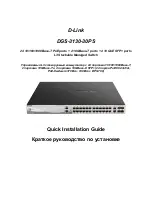
Digitronic
Digital Cam Switch Unit
Automationsanlagen GmbH
CamCon DC33/X with 8 programs
2.1. Speed Compensation
Each mechanical switch component (e.g. shield, magnetic valve) has a delay time, i.e. the time
between the start signal and the actual switching of the contacts. In processes where positioning is
executed on a moving system, this can cause problems. If such a process is driven with different
speeds, different positions are caused. To avoid this happening, new timings for the switch signals of
each speed would have to be calculated.
In order to ilustrate the complicated issues surrounding delay time or speed compensation, this will be
shown on the example of a packaging machine. In the process shown in the diagram, a glue point has
to be placed in an exactly defined spot on a moving paper track.
magnetic valve
glue nozzle
drop
paper
Points where the glue
hits the paper at the
different speeds
.
paper track
encoder
CamCon
The system has the following parameters:
vp
-
Speed of the paper track
vT
-
Falling speed of the drop of glue
d
-
Distance between the glue nozzle and
the paper track
TMV - Delay time of the magnetic valve
Without speed compensation the following would happen:
As soon as the measuring system has reached a certain position, the CamCon sends a signal to the
magnetic valve. The glue nozzle opens for a short time during which a drop of glue ejects. Between the
start of the impulse and the exit of the drop time passes, which is mainly caused by the delay time of
the magnetic valve TMV.. A further delay is caused by the time which the droplet needs to pass the
distance between the glue nozzle and the surface of the paper.
This flight time is calculated as follows:
tFlight =
d
vT
In total there the delay time is TMV. During this time the paper track moves on by a specific
distance x.
It would now be possible to move the position, where the magnetic valve is switched on, forward by a
specific amount, so that the glue droplet hits the same spot again as during standstill. In this way a
speed compensation is created which works only at a specific speed of the paper. As soon as the
speed of the device and consequently that of the paper track is, for example, doubled, the hit point of
the glue droplet is shifted by the distance x, so that, without any speed compensation, it would move
backward by double the distance (2
⋅
x) in total.
The automatic speed compensation of the CamCon makes it now possible to drive processes with
variable speed; CamCon registers the speed of the device continuously and adjusts the cams which
determine the switch time points "On Line" depending on the speed. This has the effect that the
outputs for the switch components are switched ON or OFF earlier. The direction of the movement is
of no significance in this instance.
Version from: 18.06.2009
Page: 7








































